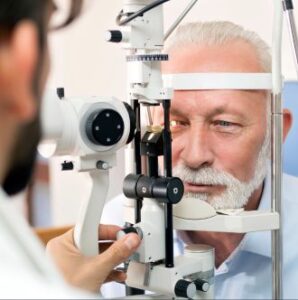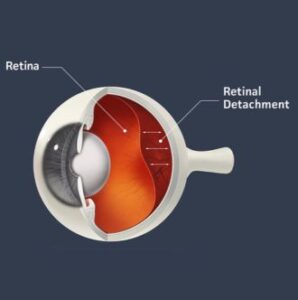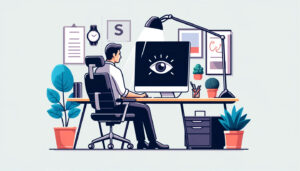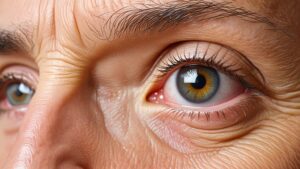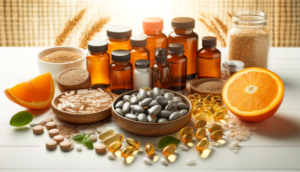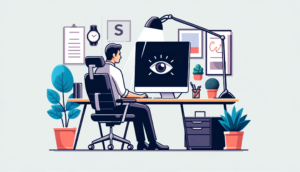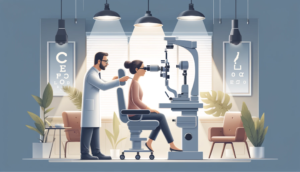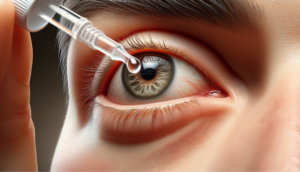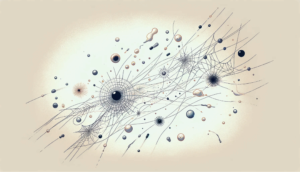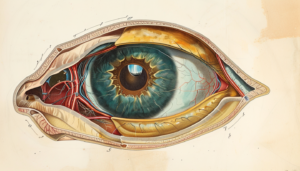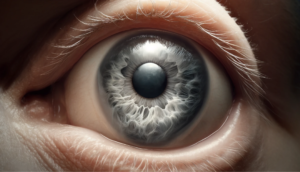For those with a high risk of developing age-related macular degeneration (AMD), 25mg/day of zinc has been shown to be beneficial for slowing the progression of the disease and preserving vision.
- Zinc is essential for eye health and overall health.
- Zinc is essential for eye health and overall health.
- Zinc is a mineral, which is an element that comes from soil and water, unlike vitamins that are organic substances made by plants or animals.
Within our bodies, zinc is often referred to as a trace element or micromineral because we only require it in very small amounts, but those small amounts are essential for eye health, and vital for our health, overall. In addition to zinc, other trace elements include iron, iodine, fluoride, copper, chromium, selenium, manganese and molybdenum.
Zinc is an important part of our cells, as it helps to form enzymes and hormones for body system functioning, and helps with blood clotting, so not getting enough can cause serious health problems.
In addition to eye health, zinc is also important for our immune system, brain, and functioning of other body systems. A zinc deficiency can lead to an increased risk of infection and mental sluggishness at any age and negatively impact normal growth and development in infants and children.
How Does Zinc Levels Help with Eye Health? How Can A Zinc Deficiency Affect My Eyes?
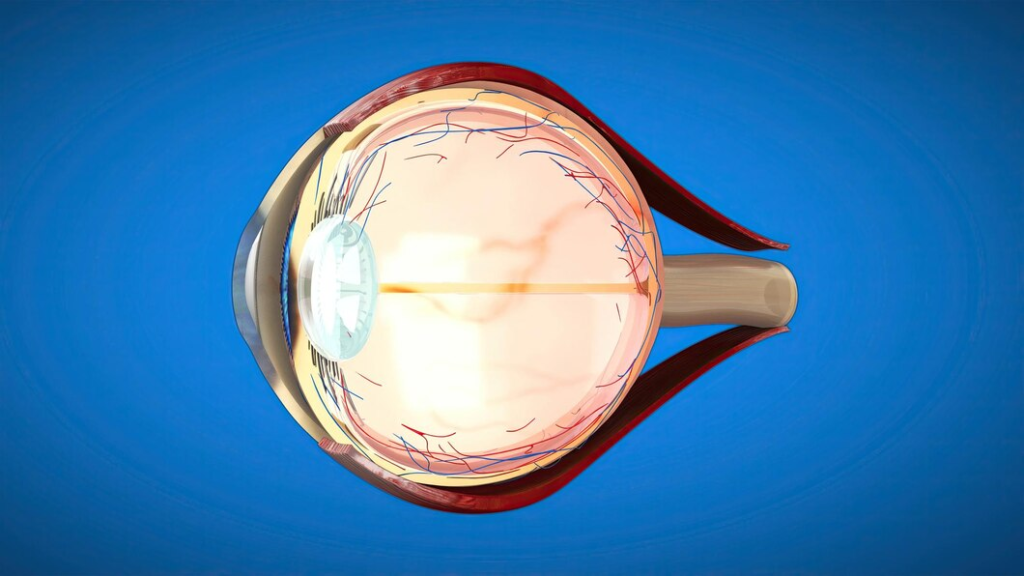
The macula is an area of the retina located near its center, responsible for clear, fine, central vision.
There are high levels of zinc concentrated in your retina, choroid (highly vascular tissue layer under the retina) and the macula. The macula is an area of the retina located near its center, responsible for clear, fine, central vision.
Zinc works with Vitamin A that it helps bring from the liver to the eye to make the pigment melanin. We have melanin in our skin, hair, and eyes, and like a built-in sunscreen, it absorbs potentially harmful UV and blue light. Greater amounts of melanin means increased protection from damaging light. Unfortunately, as we age, the amount of melanin in the body declines to nearly 50% by age 65, reducing the amount of protection we receive. Once this protection is gone, people are more susceptible to eye diseases, including macular degeneration.
Studies have shown a connection to the amount of zinc in our bodies and quality of night vision. There is evidence that a zinc deficiency can cause difficulties with night vision, however having high or increased levels of zinc does not appear to make vast improvements to night vision.
Nutritional zinc deficiency has also been shown to have a role in cataract formation, particularly in tropical and developing nations where sun exposure is quite high and nutritional deficits may be more common.
How much zinc do you need for good general health? For eye health?
Our body is not able to store zinc, so it is important to make sure you are getting enough every day to meet the daily requirements. For individuals with no known health issues or risk factors, the United States Food and Drug Administration (FDA) recommends 11 mg/day of zinc for adult men and 8 mg/day for adult women. For those with a high risk of developing age-related macular degeneration, higher doses of 25mg/day have been shown to be optimal for slowing the progression of the disease and preserving vision.
The original AREDS (Age-Related Eye Disease Study) was a large clinical trial conducted by the National Eye Institute and demonstrated how AMD progression is closely linked to nutrition. The study results were originally published in 2001 and long-term follow up in 2013. [1, 3] In the original study, 3640 participants were randomly assigned to receive a placebo, zinc, antioxidants, or antioxidants plus zinc. Those people with moderate to advanced AMD, reduced their risk of progressing to the advanced form of AMD by 25% over a period of five years, and they also reduced their risk of experiencing vision loss related to AMD by 19%.
The originally recommended “AREDS formula,” based on the study results, included 80 mg zinc (as zinc oxide and copper), and the antioxidants (vitamin C, 500 mg; vitamin E, 400 IU; and beta carotene, 15 mg). [1] A later study, AREDS2, modified the recommended formula to include 10 mg lutein, 2 mg zeaxanthin, 1000 mg of omega-3 fatty acids (350 mg DHA and 650 mg EPA), no beta-carotene and 25 mg zinc.
Although 80mg of zinc was included in the original formulation, some nutritionists expressed concern that the dose was too high and many people experienced stomach upset from the high dose. Taking higher levels of zinc (>50 mg/ day) has been shown to interfere with the absorption of copper, which is why copper (2mg) and zinc were included together in the original formulation. The changes to AREDS2 were shown to be just as effective in reducing the risk of AMD progression and vision loss and better for overall health. [2] When taking 25mg/day zinc, it is still recommended to also include 1mg/day of copper.
Can low zinc levels put me at risk for age-related macular degeneration?
The National Eye Institute has described people that may have an increased risk of AMD and could benefit from taking a combination of antioxidants and zinc like those examined in AREDS and AREDS2.
These people are defined as having either:
- Intermediate AMD in one or both eyes. Intermediate AMD can be detected by an eye care professional, but usually involves little or no vision loss.
- Advanced AMD in one eye, but not the other eye. Advanced AMD involves either a breakdown of cells in the retina (called geographic atrophy or dry AMD), or the growth of abnormal blood vessels under the retina (called neovascular or wet AMD). Either of these forms of advanced AMD can cause vision loss.
Am I getting enough zinc for my eye health?

Zinc deficiency is quite common. A study published in 2002 reported that up to 45% of adults aged 60 years or older were not meeting the daily intake requirements. [4] Some good sources of zinc from our diets include red meat, seafood, poultry, eggs, wheat germ, mixed nuts, black-eyed peas, tofu and beans. As an example, a 3.5oz serving of beef (raw) contains 4.8 mg of zinc, so if the average burger patty is 4oz, it takes quite a lot of food and effort to reach your recommended zinc intake each day.
Eating enough zinc-rich foods to reach the recommended 25mg/day for eye health can be challenging, so many people opt to take a high-quality supplement to ensure you are getting the desired amount.
As with any health supplement, it is important to speak to your doctor, especially if you are taking other medications. Zinc can interfere with some antibiotics and prevent them from working the way they were intended.
What are some symptoms of zinc deficiency?
Zinc is a mineral that helps the body carry out many functions, therefore, even a mild zinc deficiency can cause metabolic changes to occur throughout the body. Mildly low levels of zinc can cause people to notice a weakened sense of smell or taste resulting in poor appetite, thinning hair, brittle nails and vision problems, particularly with night vision. Zinc deficiency can also cause an altered immune response, resulting in an increased risk of infection:
- skin problems
- acne
- rashes
- dry skin
- slow wound healing.
References:
[1] Age-Related Eye Disease Study Research Group. A randomized, placebo-controlled, clinical trial of high-dose supplementation with vitamins C and E, beta carotene, and zinc for age-related macular degeneration and vision loss: AREDS report No. 8. Arch Ophthalmol. 2001;119(10):1417-1436. https://www.ncbi.nlm.nih.gov/pubmed/11594942
[2] Age-Related Eye Disease Study 2 Research Group. Lutein + zeaxanthin and omega-3 fatty acids for age-related macular degeneration: the Age-Related Eye Disease Study 2 (AREDS2) randomized clinical trial. JAMA. 2013 May 15;309(19):2005-15. https://www.ncbi.nlm.nih.gov/pubmed/23644932
[3] Chew EY, Clemons TE, Agrón E, et al; Age-Related Eye Disease Study Research Group. Long-term effects of vitamins C, E, β-carotene and zinc on age-related macular degeneration in theAge-Related Eye Disease Study: AREDS report No. 35. Ophthalmology. 2013;120(8):1604-11.e4. https://www.ncbi.nlm.nih.gov/pubmed/23582353
[4] Ervin RB, Kennedy-Stephenson J. Mineral intakes of elderly adult supplement and non-supplement users in the third national health and nutrition examination survey. J Nutr 2002;132:3422-7. https://www.ncbi.nlm.nih.gov/pubmed/12421862

